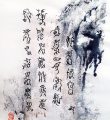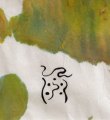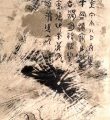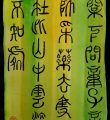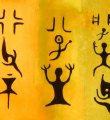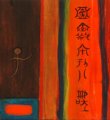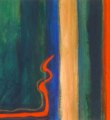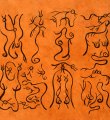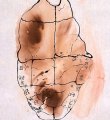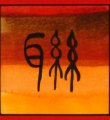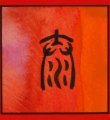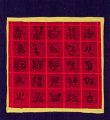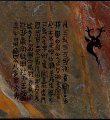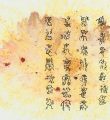Ancient: Scripts & Pictograms
 “During the reign of the semi-mythical Yellow Emperor, (2898-2679 BCE) the first elementary Chinese characters are thought to have been developed by the Emperor’s official recorder Cangjie. According to certain ancient books, Cangjie carefully observed the shapes of shadows cast by trees and the markings left by animals. From these he took inspiration and inscribed representations of these forms onto sticks, thereby creating the first Chinese pictographic characters. An ancient story recalls that when Cangjie created theses first characters, the gods caused heavy rains, loud thunder, and great earthquakes; so upset were they that a human being had cracked the code of the mysteries of the universe.”
“During the reign of the semi-mythical Yellow Emperor, (2898-2679 BCE) the first elementary Chinese characters are thought to have been developed by the Emperor’s official recorder Cangjie. According to certain ancient books, Cangjie carefully observed the shapes of shadows cast by trees and the markings left by animals. From these he took inspiration and inscribed representations of these forms onto sticks, thereby creating the first Chinese pictographic characters. An ancient story recalls that when Cangjie created theses first characters, the gods caused heavy rains, loud thunder, and great earthquakes; so upset were they that a human being had cracked the code of the mysteries of the universe.”
— Khoo Seow Hwa and Nancy L. Penrose, Behind the Brushstrokes: Appreciating Chinese Calligraphy
Historically, we know that Chinese calligraphy took birth as pictograms in ancient China around 5000 B.C. Scratched on tortoise shells and ox shoulder bones, they were written by shamans who heated them, and divined the cracks that occurred as answers to their questions concerning harvests, hunts, birth, death, wars, marriages, etc. The scratches resemble bird’s footprints, the lines naturally seen in rocks, or holes eaten in wood by worms. These pictures never died; whether more apparent or very stylized, they make up the characters read in East Asia today.
